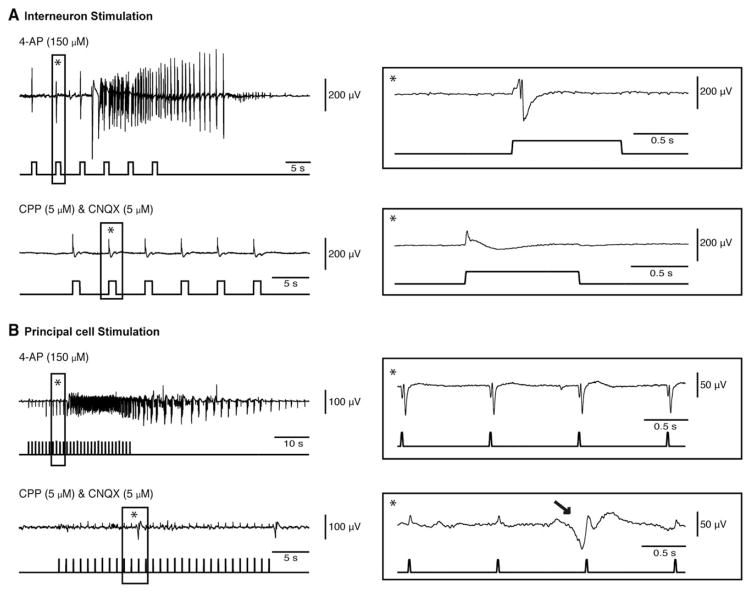FIGURE 6.
Blockade of glutamatergic neurotransmission abolishes both spontaneously occurring and optogenetically induced ictal events. (A) Example of an ictal discharge induced by a train of 1-second light pulses at 0.2Hz that activate parvalbumin-positive interneurons in the entorhinal cortex (EC) during bath application of 4-aminopyridine (4AP); a light-induced interictal discharge is expanded on the right (asterisk). Note that bath application of 5μM 3-([R]-2-carboxypiperazin-4-yl)-propyl-1-phosphonic acid (CPP) and 5μM 6-cyano-7-nitroquinoxaline-2,3-dione (CNQX) block all ictal discharges, whereas light-driven presumptive γ-aminobutyric acidergic (GABAergic) interictal events could be still evoked. (B) Example of an ictal discharge induced by a train of 20-millisecond light pulses at 1Hz activating calmodulin-dependent protein kinase–positive principal cells in the EC during bath application of 4AP; part of the trace is further expanded to show the direct responses to stimuli (asterisk). In this experiment as well, bath application of 5μM CPP and 5μM CNQX abolishes spontaneous and light-induced ictal discharges; under these condition, spontaneous GABAergic discharges could, however, be recorded (arrow). Note that the small deflections in the field potential trace coinciding with stimuli are stimulation artifacts.

